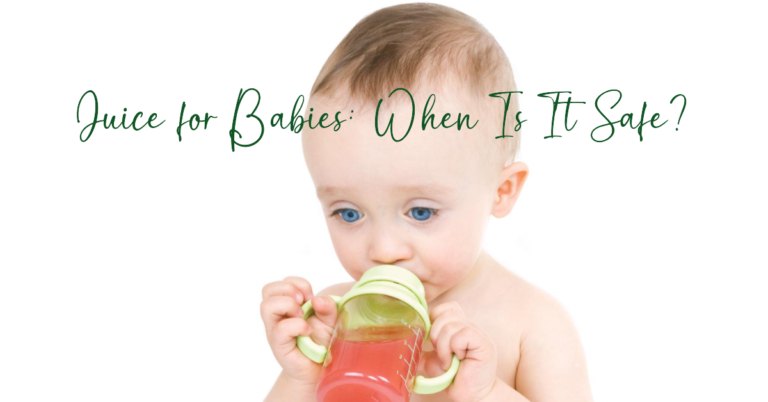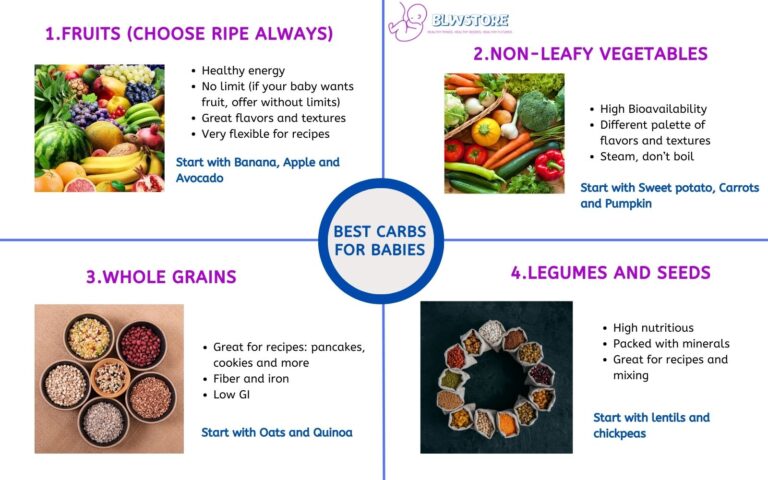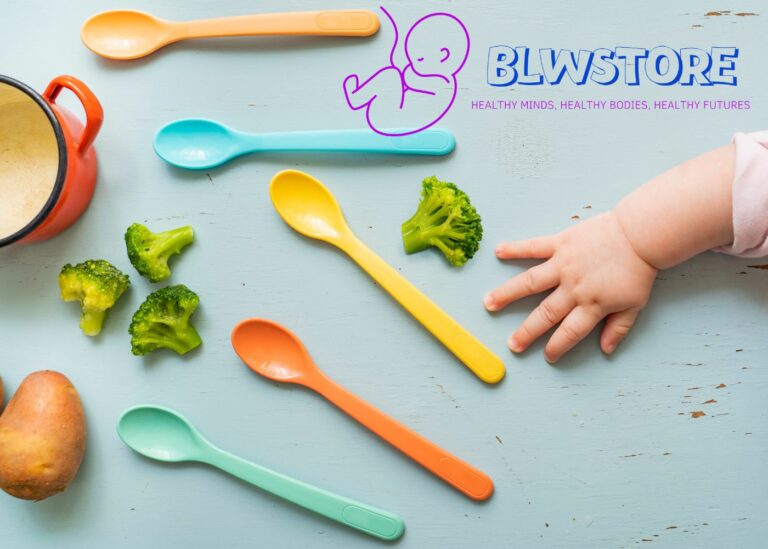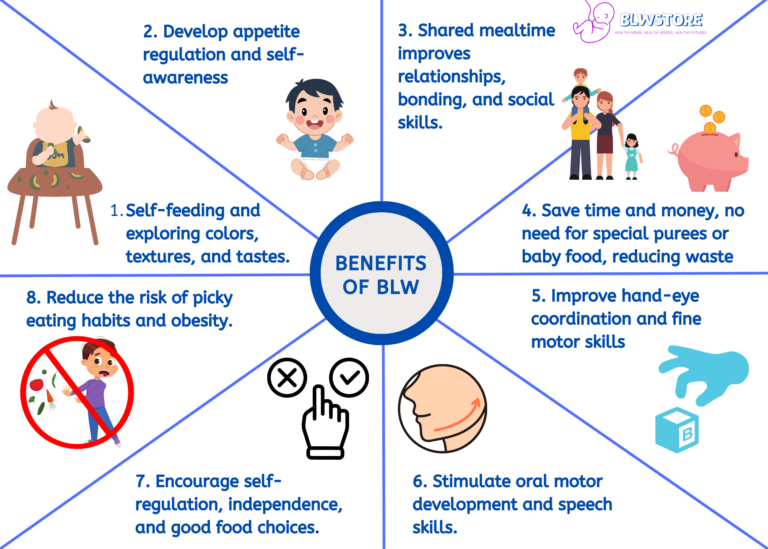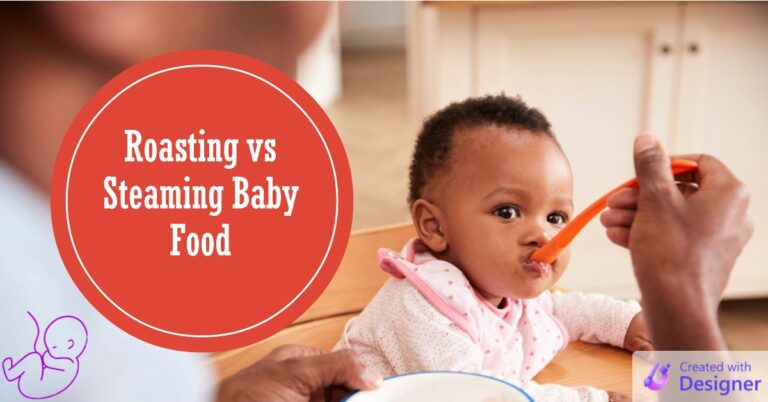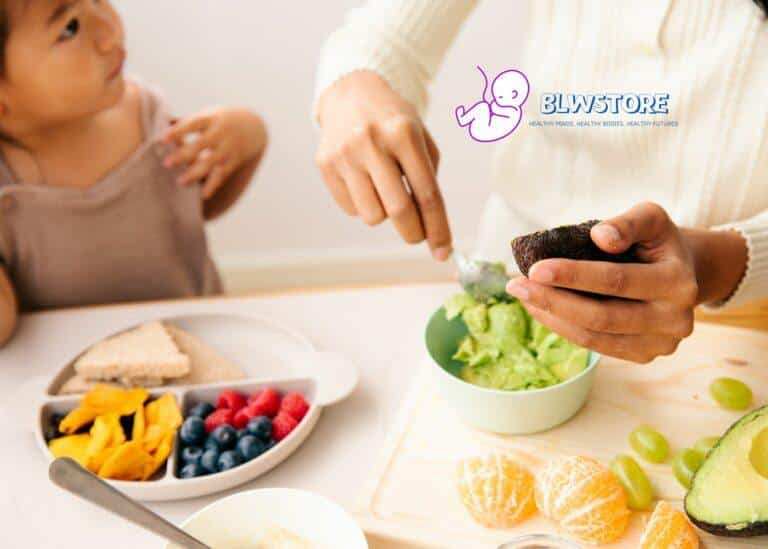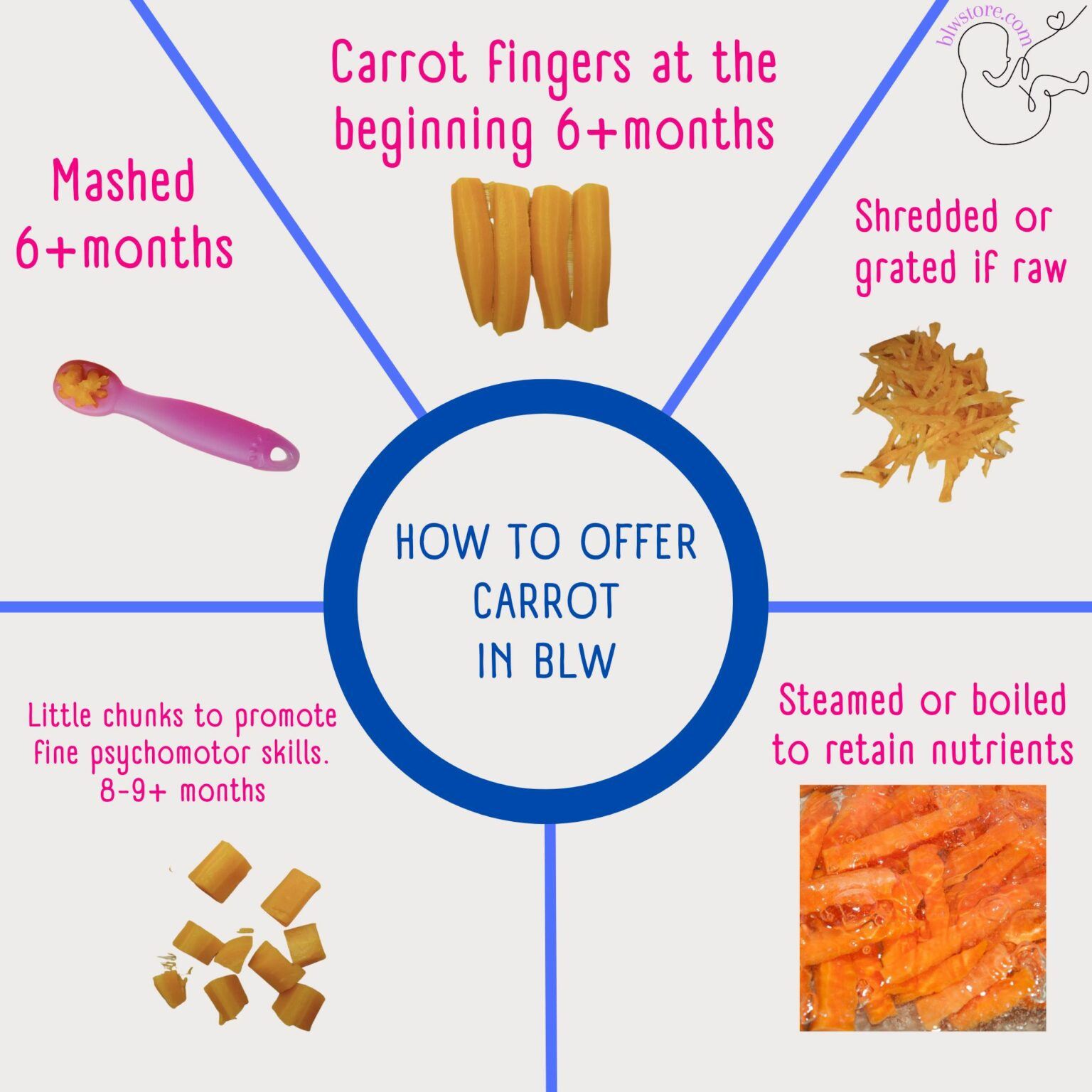
Welcome to our comprehensive “Baby Led Weaning: Carrot Guide,” where we’ll teach you everything you need to know about introducing carrots as part of your baby’s baby-led weaning journey. In this article, you’ll discover:
- The best ways to serve carrots to your baby
- Why carrots are a fantastic choice for baby-led weaning
- When to introduce carrots to your little one
- The ideal cooking methods for carrots in baby-led weaning
- Nutritional benefits of carrots for your baby
- Tips for storing carrots properly
- Answers to common baby-led weaning carrot FAQs
Let’s get after it!
Key Takeaways
- Carrots are an excellent choice for Baby Led Weaning due to their soft texture, sweet taste, and rich nutrient content.
- Serve carrots in different ways such as long strips, whole, or shredded to cater to your baby’s preferences and developmental stage.
- Introduce carrots to your baby when they are ready for solids, typically around 6 months of age.
- Cooking methods for BLW include steaming, roasting, sautéing, and boiling.
- Carrots are rich in beta-carotene, vitamin A, vitamin K, potassium, fiber, folate, magnesium, and calcium.
- Store carrots properly to ensure freshness and prevent spoilage.
What is the best way to serve carrots to your baby?
Carrot Fingers
As with bananas, the first and safest way to offer carrots is in long strips thick enough for your baby to grasp easily.
Make sure the carrot is peeled and is steamed or boiled, so that it is tender.
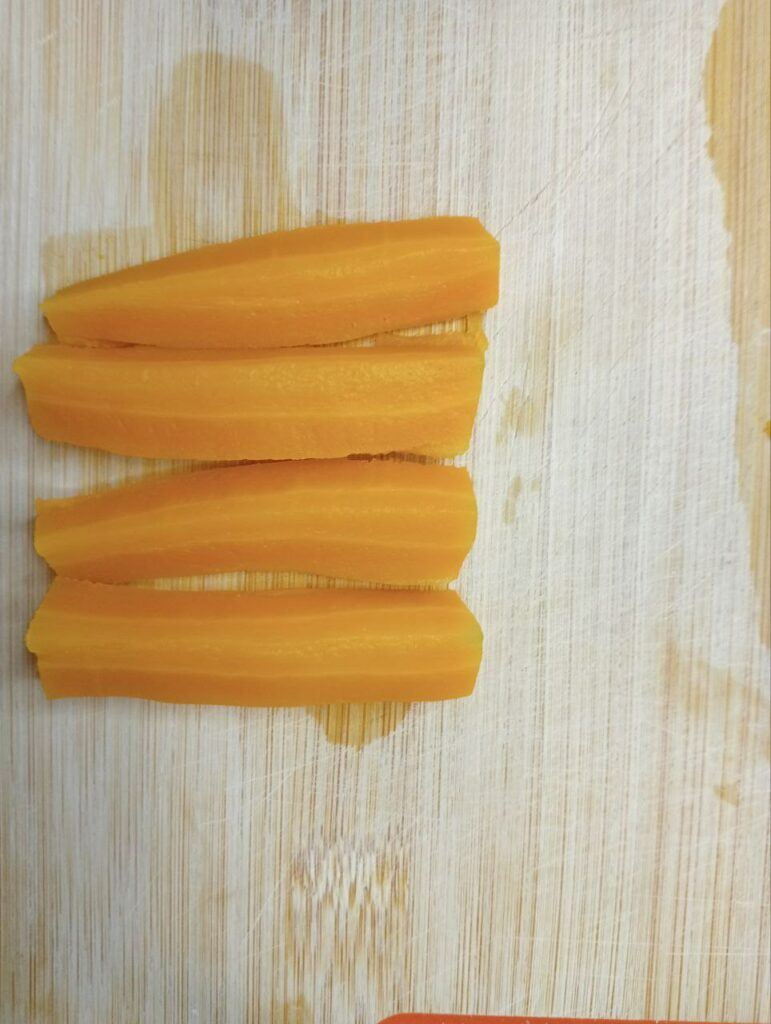
Carrot Whole
Offering the whole carrot is also a valid possibility, as with carrot fingers.
Make sure its texture is tender enough (see test below), and that it is the right size for your baby’s hand.
If it is too thick, simply cut it in half crosswise.
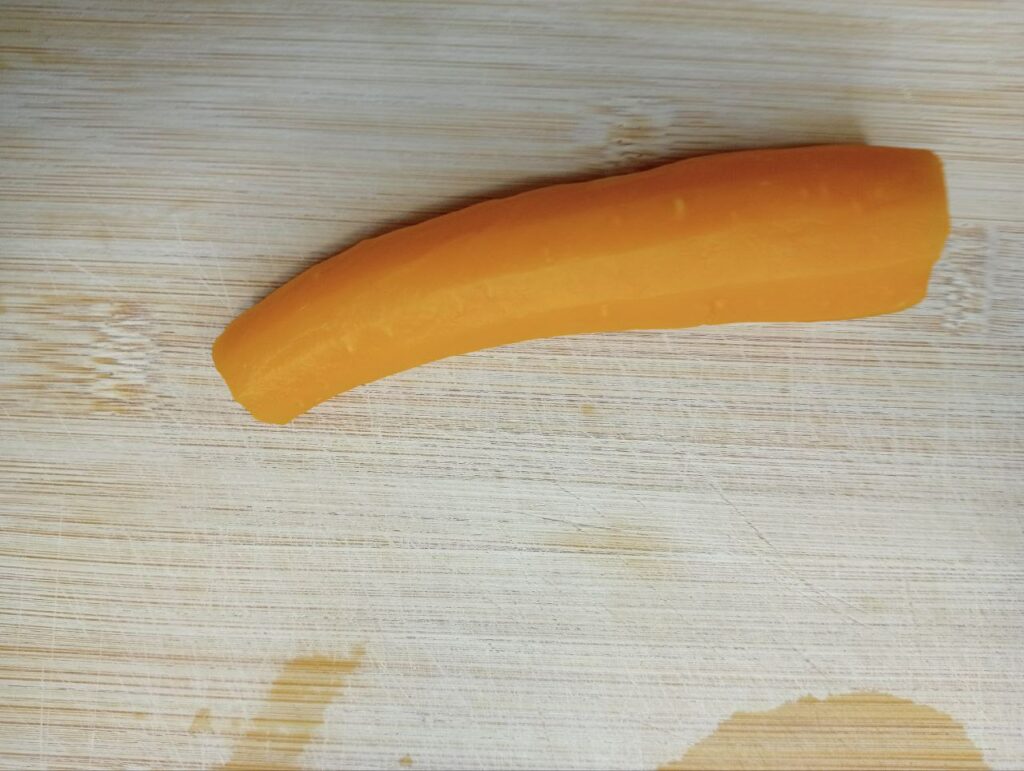
Carrot Shredded
Offering shredded carrots also has its advantages since you can do it raw.
Although it is always better if it is cooked at the beginning.
This way you can mix it with other vegetables or foods, once your baby has already tried it on its own.
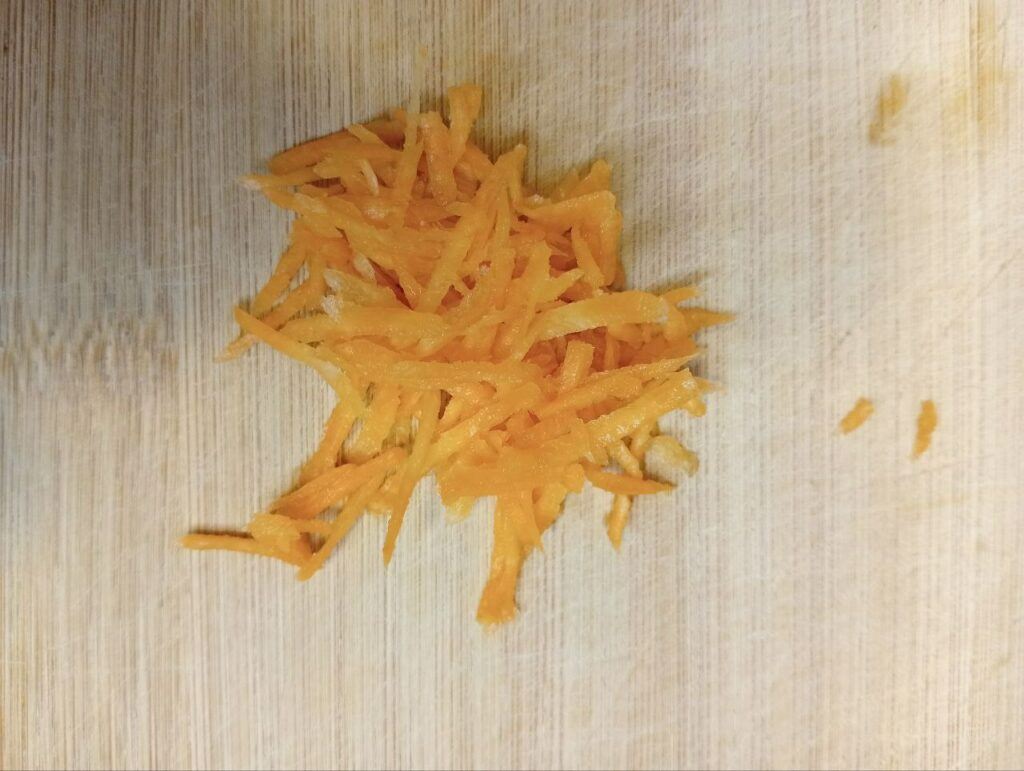
Carrot tenderness test
This video serves to demonstrate how tender a carrot has to be before offering it to our baby.
You must be able to squash it by generating a little force with your index and big fingers.
Why are carrots a great BLW food?
Carrots are soft and easy to chew and grab
Carrots are hard enough for your baby to grasp, yet soft enough to chew if cooked well.
It is one of the first vegetables you can offer your baby.
Nutrient rich
Carrots are full of essential minerals and micronutrients like potassium, folate, calcium, and magnesium, as well as vitamins A and K.
Carrots are low in calories and fat
Which makes them perfect if our baby is breastfeeding or formula feeding on demand.
Carrots can be served cooked or raw (a bit later)
They are versatile, which means that once our infant has mastered chewing, we may begin serving them uncooked and continue to encourage the use of jaws and teeth.
Carrots are easy to carry and can be eaten as a snack
When out and about, carrots, like bananas, are the perfect snack: full of nutrients, easy to eat and super easy to clean up!
When should you introduce carrots to your baby?
Following the same rules as with bananas or broccoli, carrots can be introduced when your baby is ready to start eating solids.
This is usually around 6 months, but will depend on your baby’s developmental level.
If your baby tries to put solids in his mouth, can hold himself while sitting up and shows interest for foods, these are signs that solids need to start happening!
What is the best way to cook carrots for BLW?
Let’s take a look at their differences:
Best way: Steamed
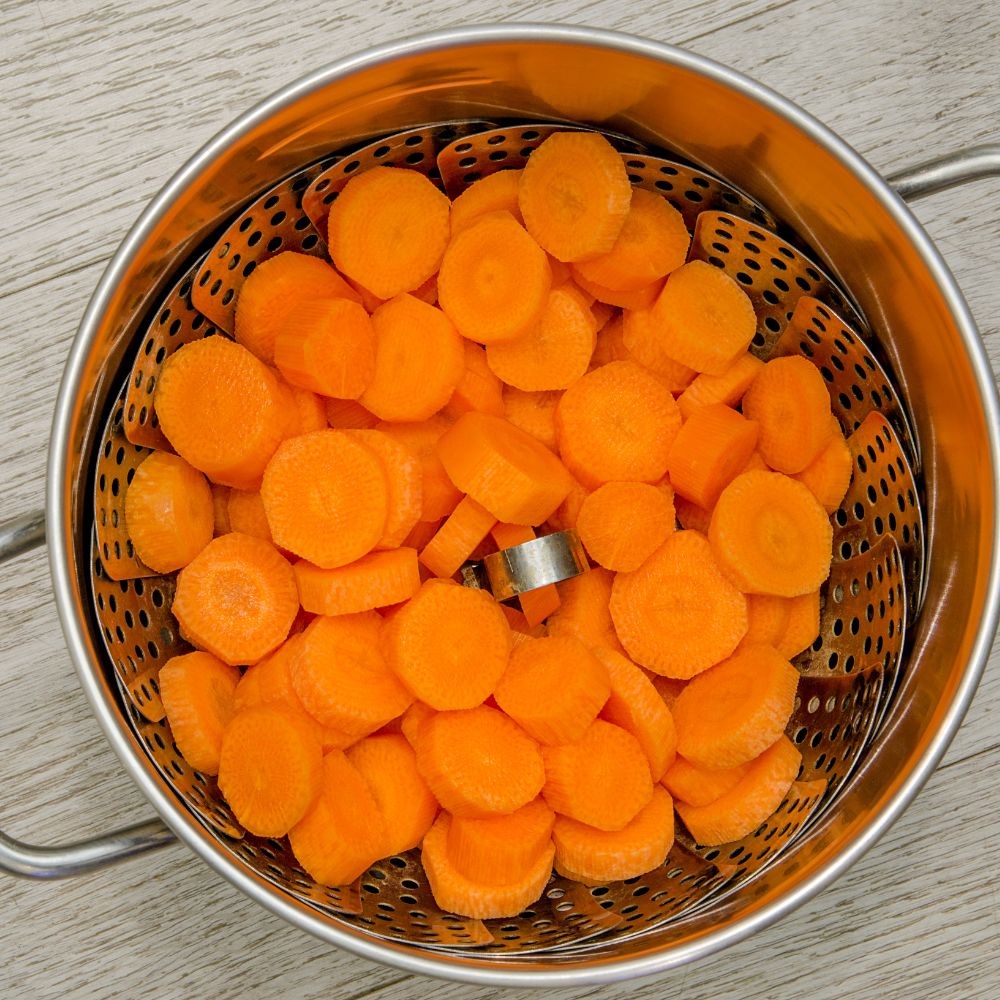
The ideal way to maintain the fragrant smell, distinct taste and crucial nourishment of foods is to steam them.
That is why we consistently advocate for having a reliable steamer that will serve you for a prolonged period.
Steaming is extremely simple, hygienic, nutritious and speedy.
Second best: Roasted
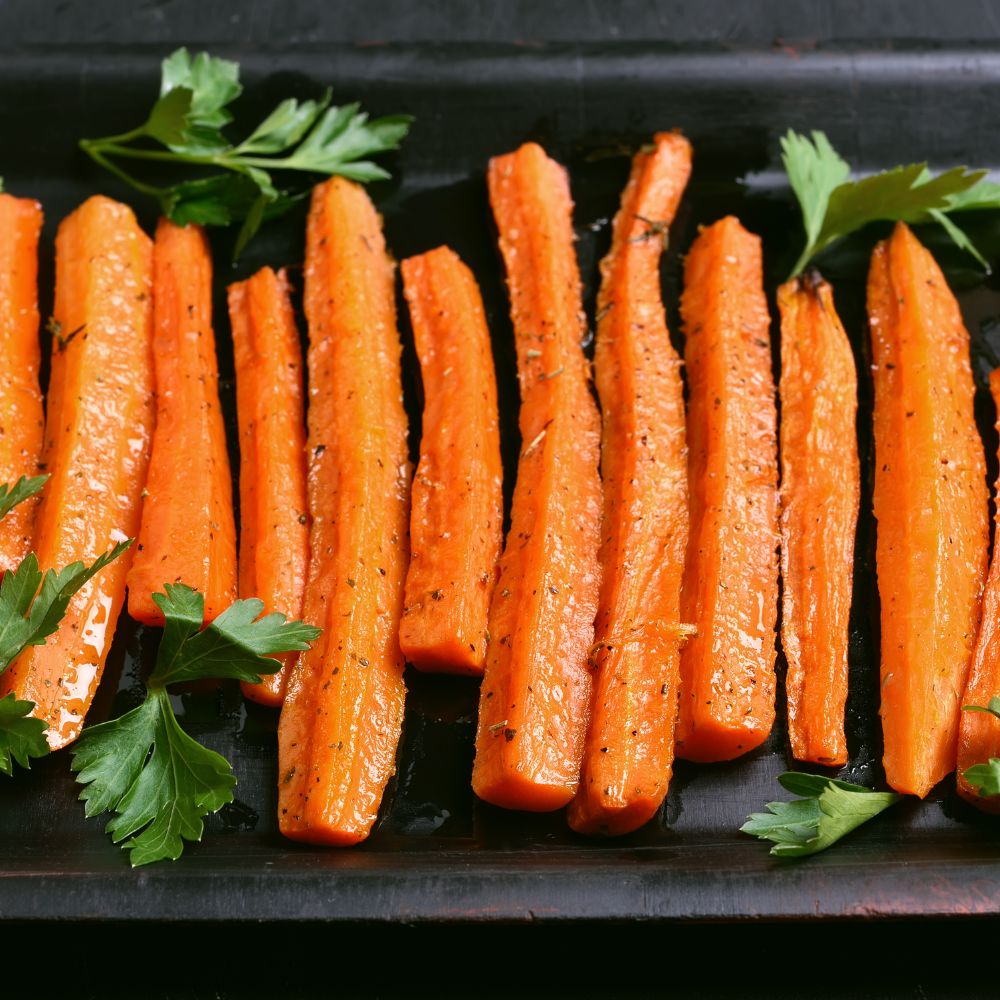
You can use the oven or air fryer to bring out the delectable, caramelized flavor that carrots have to offer. This method of preparation will truly unlock the natural sweetness of the carrots.
It’s a great way to get all the nutrients of veggies while enjoying their amazing flavor.
We suggest introducing roasted foods once your baby has grown accustomed to the original taste.
Third best: Sautéed
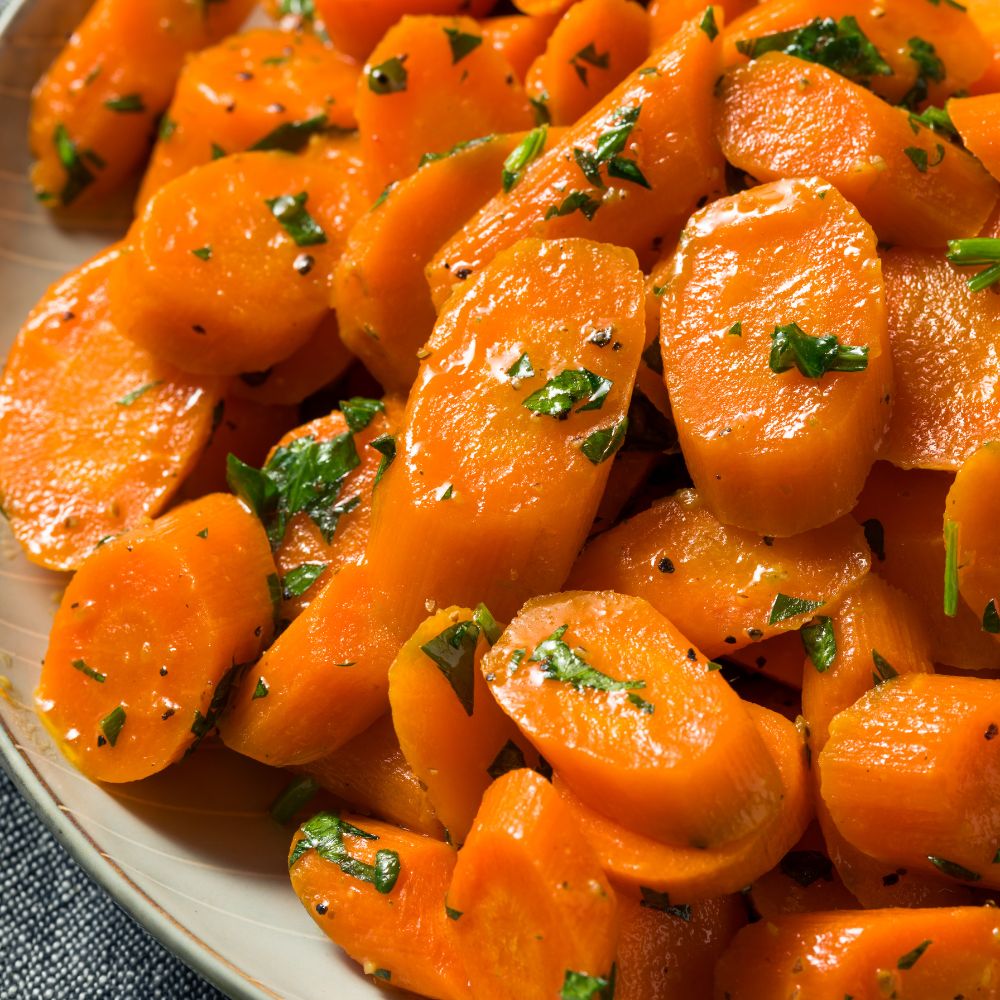
With the sautéing technique, you can bring out the best in small carrot pieces and achieve a delightful texture – soft, with some crisped-up sections, depending on how long you cook them. You can include carrots with other vegetables for a scrumptious sautéed meal or just cook the carrots alone.
This method is great if you want to combine the carrots with other vegetables or foods in your baby’s meal, however, we do not recommend doing this the first time.
Fourth best: Boiled

Boiling carrots actually boosts the concentration of lutein, an antioxidant crucial for healthy vision, by approximately 11% compared to raw carrots, and conserves more essential nutrients than steaming or frying.
As a general rule, boiling vegetables or foods causes them to lose properties, however, in the case of carrots, it seems to be slightly different.
While they lose some vitamin C in the boiling process, an exploration revealed that boiling carrots conserves more of its essential nutrients than either steaming or frying, which was the next most effective technique.
Even more remarkable was the fact that boiling carrots actually boosts the concentration of lutein – an antioxidant that is crucial for healthy vision – by approximately 11% compared to raw carrots.
On the other hand, steaming and sauteing caused a drop in lutein content. Boiling carrots also produced an all-round 14% uptick in their carotenoid levels, whereas steaming and sauteing both led to a decrease.
Since these findings are relatively new, we have left this method of cooking carrots in fourth position.
The good thing is that whatever method you choose, carrots will be very nutritious for your baby.
What do carrots provide for your baby?
Beta-carotene, an antioxidant that the body turns into vitamin A, is abundant in carrots.
Your kid needs vitamin A because it promotes healthy cell growth, immune system function, and eye development.
In addition, your baby will benefit from the vitamin K, potassium, fiber, folate, magnesium, and calcium found in carrots.
Carrots also contain a high fiber content, which can help your infant feel full for longer and prevent constipation.
Carrots are a great snack for your little one since they are both healthy and low in calories and fat.
What is the best way to store carrots?
Whole
The trick to keeping carrots fresh is to refrain from washing them until you are ready to consume them. Any additional moisture might hasten their spoilage.
Remove the carrot greens and either dispose of them or place them in a separate container if you intend to utilize them.
It is essential to note that carrot greens absorb moisture from the roots, causing them to wilt.
Wrap the carrots in a paper towel and keep them in an airtight container for optimum storage.
Place the container in the coldest section of your refrigerator and keep it away from apples and other fruits that emit ethylene gas to prevent spoilage.
Peeled
To keep peeled carrots fresh and prevent them from drying out, you must add water.
Wash the carrots with cool water and set them in a plate or airtight container with water.
If you won’t be eating them within a few days, you should change the water every four to five days. Consequently, they will remain fresh for up to three weeks.
Before consuming, give them a short washing to eliminate microorganisms.
Cut
To ensure your cut carrots stay fresh, here’s what to do:
- Get a damp paper towel and cover the carrots.
- Put the wrapped carrots in an airtight box, and position it in the coldest area of your refrigerator like the vegetable drawer or close to the freezer.
- Consume within three weeks for optimal flavor.
Baby Led Weaning Carrot FAQ
1. Are carrots hard for babies to digest?
The answer is no.
Babies will find it easy to consume and digest carrots, and they often enjoy the pleasant taste, given that they have a natural inclination for sweet flavors and carrots are among the sweetest of all veggies.
2. Is it OK to give carrots to babies everyday?
It is normally safe to offer infants carrots every day.
Due to its high fiber content, however, it is vital to manage how much carrots a newborn consumes. An excessive amount of fiber can lead to digestive difficulties such as constipation and flatulence.
Additionally, it is essential to note that no single meal should comprise the majority of a baby’s diet. A balanced diet consisting of a range of nutrient-dense foods is vital for the health and development of a newborn.
3. Can I give my 6 month old raw carrot?
Providing raw carrots to young children poses a choking threat; thus, they should be sliced into thin strips and cooked until mushy.
You should NEVER give your infant uncooked carrots until they are shredded. Due to the risk of choking, entire raw carrots are not suggested for children under the age of three.
If you must serve raw carrots at some point, make sure they are sliced into small sticks to prevent choking.
4. Is it better to boil or steam baby carrots?
As mentioned above, in the case of carrots, the answer is more complicated.
In our opinion, for ease and cleanliness, we always choose steaming.
Conclusion
To sum up, introducing carrots as a part of baby-led weaning is an excellent choice for parents looking to provide their little ones with a nutritious and delicious first food.
Carrots are rich in essential vitamins, minerals, and antioxidants that promote healthy growth and development, and their sweet taste and soft texture make them an ideal food for self-feeding.
As you embark on your baby-led weaning journey, remember to always prioritize safety and encourage exploration and experimentation with a variety of foods.
With the right approach and a bit of patience, you can help your baby establish healthy eating habits that will last a lifetime.
So go ahead and add carrots to your baby-led weaning menu!
We’re Maria and Alberto, a married couple and educators who are nutrition enthusiasts. Even before we had kids, we were already crazy about nutrition.
We’d read scientific articles, watch videos from nutritionists, and spend hours listening to nutrition podcasts.
Today, we continue doing this, but in a different way, as we’ve learned to sift through the noise and trends. Nutrition, like any other field of knowledge, the more you read and learn, the more you develop a comprehensive understanding of reality, and that’s what has happened to us.
Before having our first child, we focused on learning everything we could about child nutrition, using the same techniques we had already employed, backed by our extensive knowledge in nutrition.
Our mission is to help other parents with their children’s nutrition, to help them become the best versions of themselves.
If we are what we eat and drink, which is absolutely true, let’s do it right!


